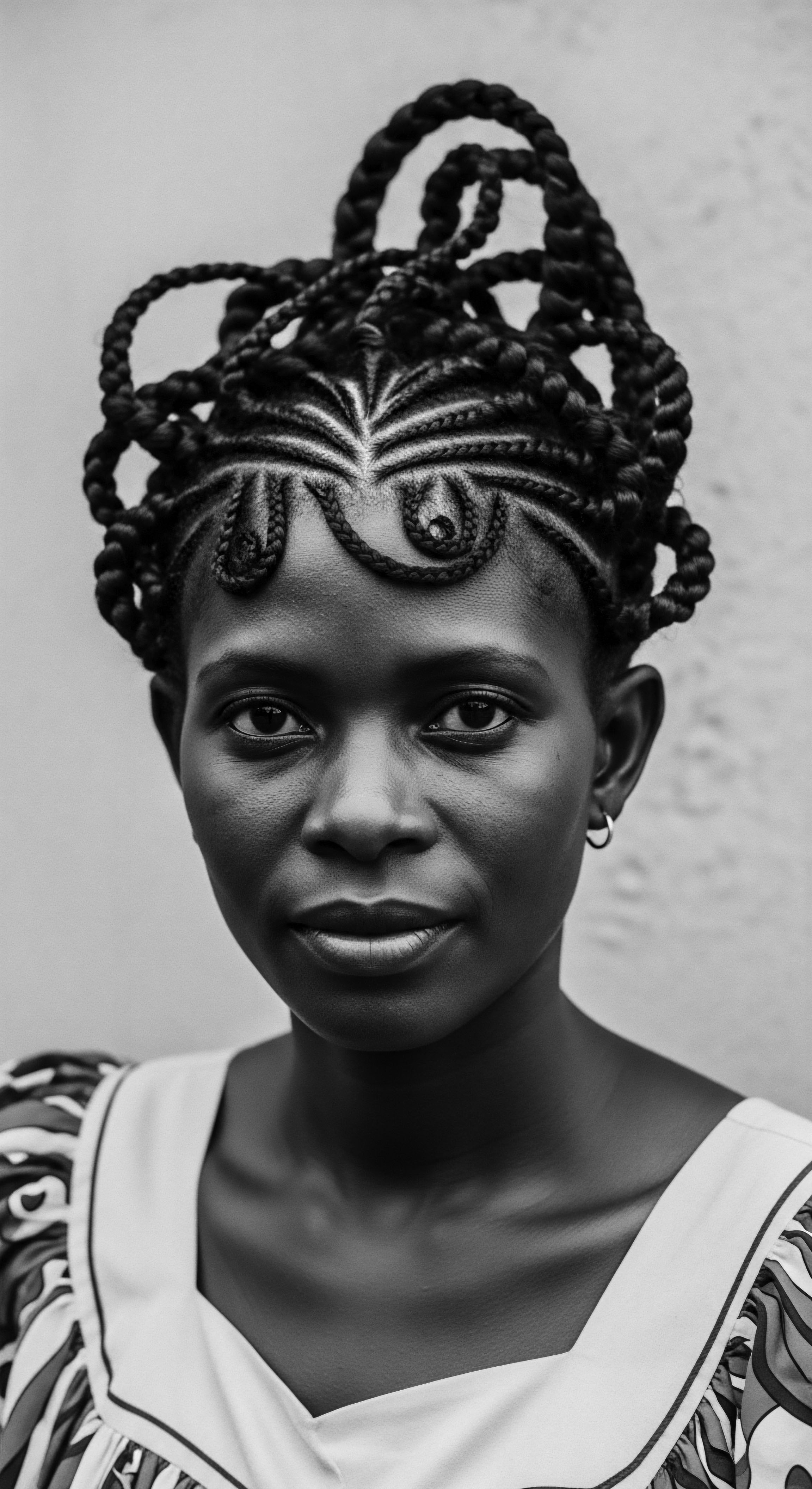
Fundamentals
The Natural Hair Regimen, within Roothea’s understanding, is far more than a simple sequence of product applications or styling choices. It represents a conscious, deeply rooted commitment to nurturing one’s inherent hair texture, allowing it to flourish in its unadulterated state. This dedication to native curl patterns, coils, and waves extends beyond aesthetic preference; it is a holistic approach to hair care that honors the unique biological blueprint of textured strands.
At its fundamental level, the Natural Hair Regimen is a deliberate choice to abstain from chemical alterations that permanently reshape the hair’s structure, such as relaxers or perms. It is a path that seeks alignment with the hair’s natural inclinations, promoting health and vitality through gentle methods and thoughtful ingredient selections.
This approach centers on fostering an optimal environment for hair growth and preservation. It involves a consistent, individualized sequence of cleansing, conditioning, moisturizing, and protecting, all tailored to the specific needs of textured hair. Unlike transient trends, this regimen cultivates a sustained relationship with one’s hair, encouraging a deep appreciation for its inherent characteristics.
The daily and weekly rituals associated with this care become a language of attentiveness, a dialogue between the individual and their living crown. This is a foundational understanding, setting the stage for a richer exploration of its cultural and historical resonance.
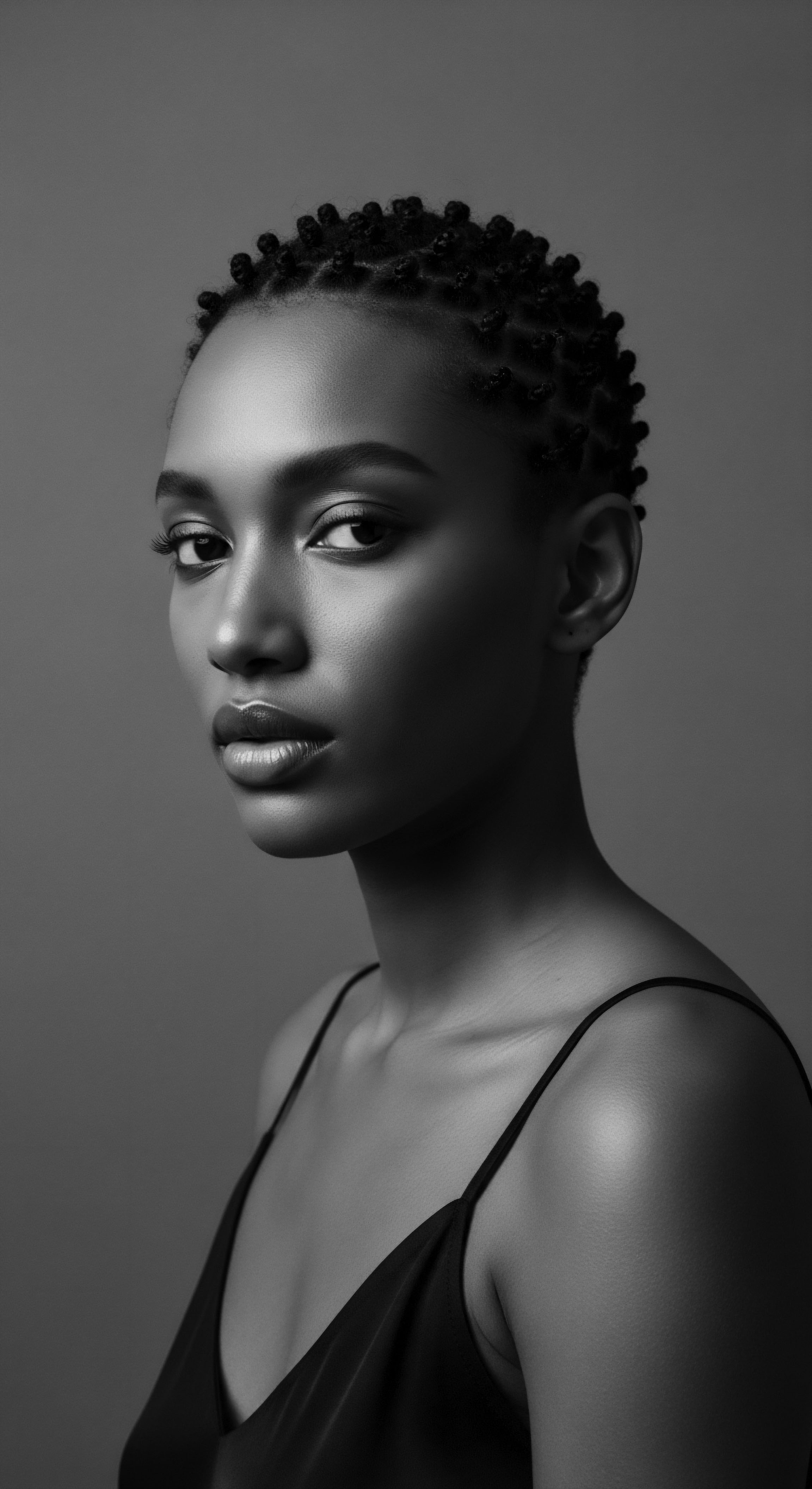
Initial Steps for Honoring Texture
For those embarking on this path, the initial phase often involves a careful transition away from practices that have historically suppressed natural texture. This period, sometimes referred to as the ‘transitioning phase,’ allows chemically altered hair to grow out, making space for the authentic curl pattern to emerge. It calls for patience and a shift in mindset, recognizing that hair health and ancestral connection hold greater value than conformity to imposed beauty ideals. The journey begins with acceptance of the hair’s original form, acknowledging its distinct requirements for care.
The Natural Hair Regimen is a conscious return to hair’s inherent design, a journey of recognition and respectful care.
The earliest practical steps in a Natural Hair Regimen often include:
- Gentle Cleansing ❉ Employing sulfate-free cleansers that remove impurities without stripping the hair of its vital moisture. This preserves the natural oils essential for textured strands.
- Deep Conditioning ❉ Regular application of rich, hydrating treatments that replenish moisture and strengthen the hair shaft. This practice is crucial for maintaining elasticity and preventing breakage.
- Moisture Sealing ❉ Utilizing a combination of water-based products and oils or butters to lock in hydration. This technique, often known as the ‘LOC’ (Liquid, Oil, Cream) or ‘LCO’ (Liquid, Cream, Oil) method, ensures sustained moisture for curls and coils.
- Protective Styling ❉ Adopting styles that minimize manipulation and exposure to environmental stressors. Braids, twists, and buns offer respite for delicate strands, guarding against damage.
Each of these elements contributes to a foundational understanding of how to tend to textured hair in a manner that supports its natural integrity. The simplicity of these practices belies their profound impact on the hair’s well-being and the individual’s connection to their hair heritage.
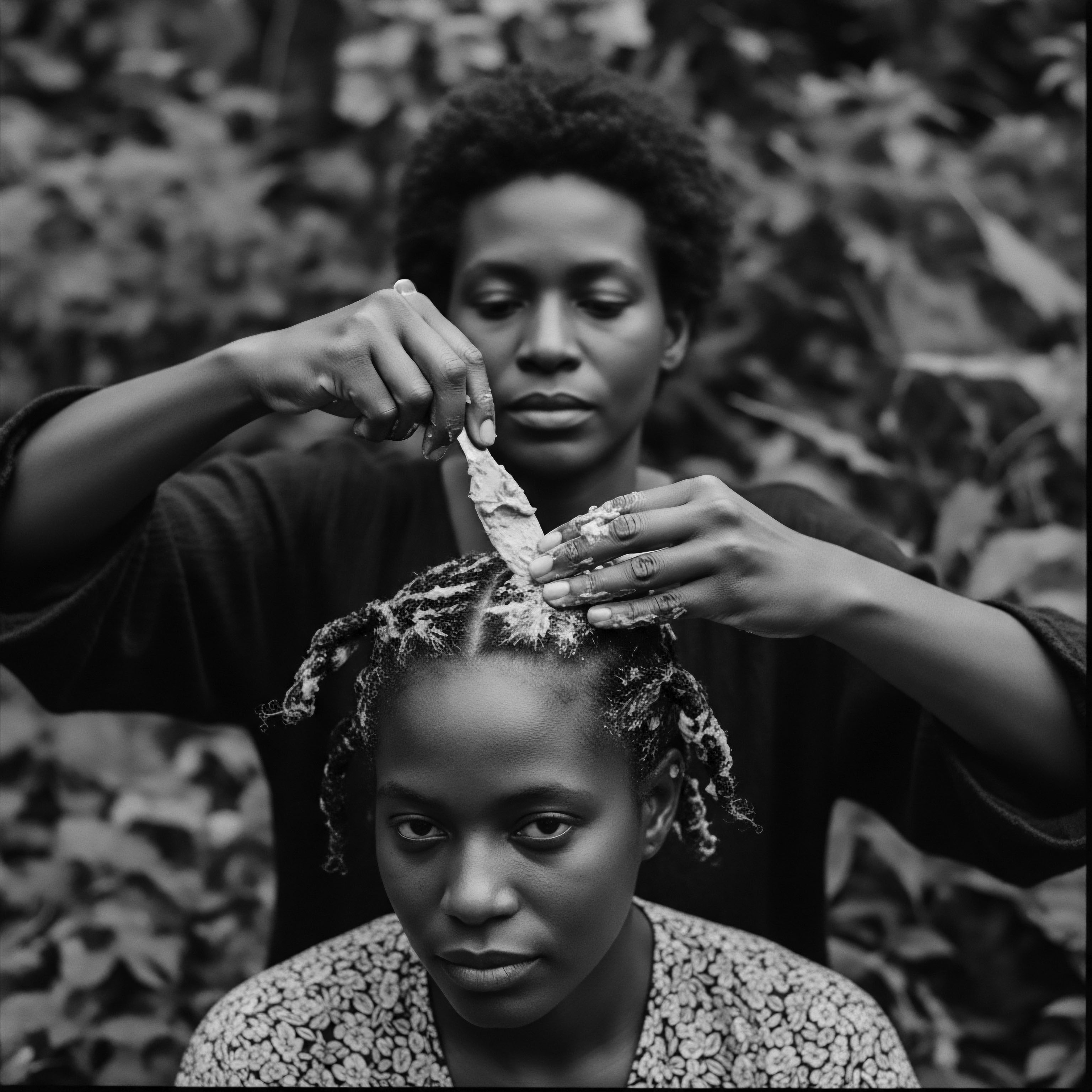
Intermediate
Moving beyond the initial tenets, the Natural Hair Regimen takes on a deeper meaning, evolving into a sophisticated practice informed by an understanding of textured hair’s unique structural properties and its profound cultural history. This intermediate phase involves a more discerning selection of ingredients, an intuitive grasp of hair’s responsiveness to different care modalities, and an appreciation for the communal knowledge that has shaped these practices across generations. The regimen at this level is not merely about maintenance; it is about cultivation, a mindful tending that seeks to optimize both the biological health and the symbolic vibrancy of textured hair.
The hair shaft of textured hair, particularly coils and kinks, possesses a distinctive elliptical shape and a more varied distribution of disulfide bonds compared to straighter hair types. This structural variation results in a higher propensity for dryness and fragility, as natural oils struggle to travel down the winding helix, and points of curvature become areas of vulnerability. An intermediate Natural Hair Regimen accounts for these biological realities, prioritizing practices that mitigate dryness and enhance strength. This involves a thoughtful consideration of humectants, emollients, and proteins, balancing their application to achieve optimal moisture retention and structural resilience.
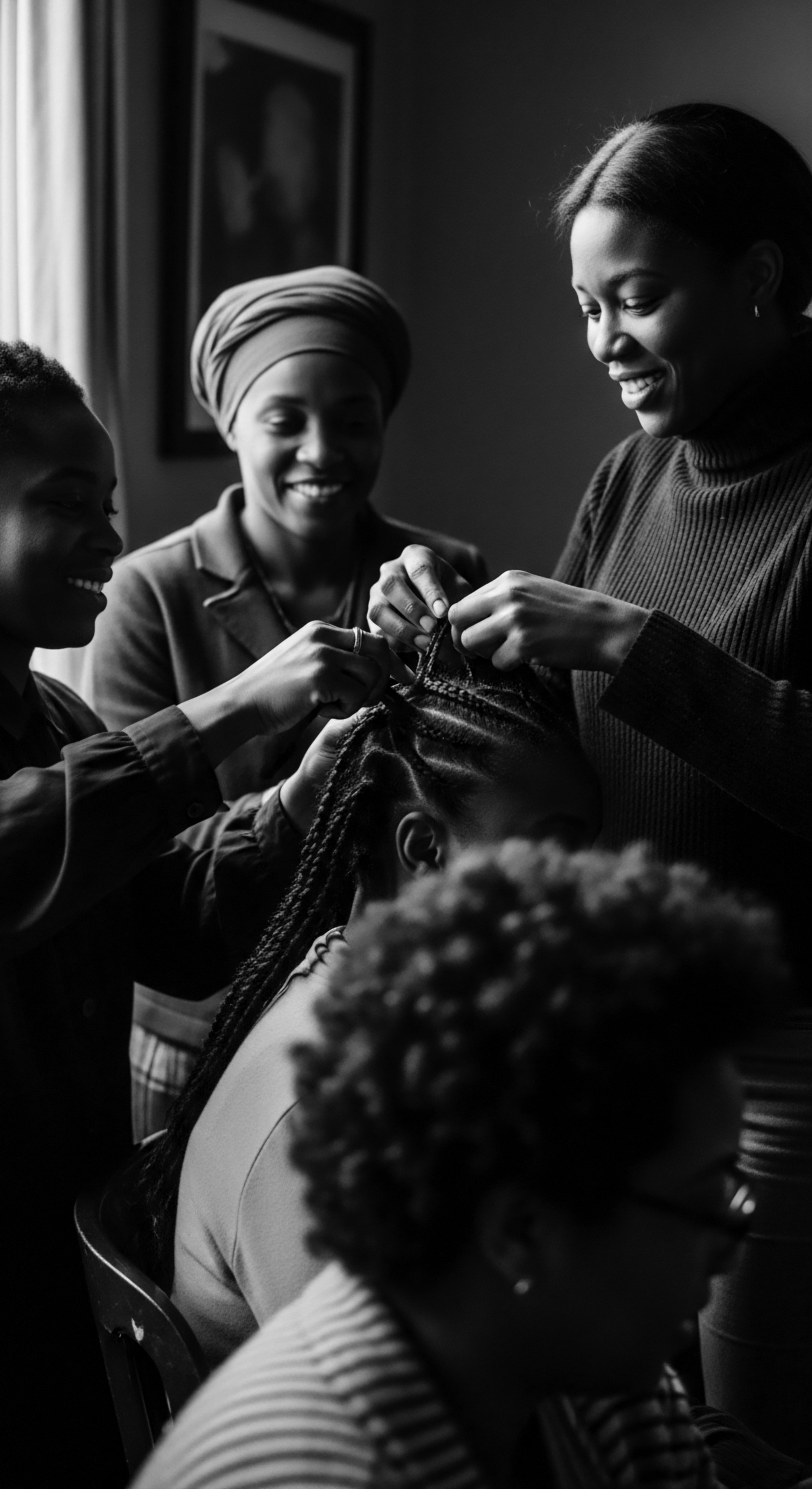
The Tender Thread ❉ Living Traditions of Care and Community
The Natural Hair Regimen, viewed through the lens of heritage, is a living testament to ancestral wisdom. It is a thread woven through generations, connecting contemporary practices to the enduring traditions of African and diasporic communities. Before the brutal disruptions of the transatlantic slave trade, hair care in many African societies was an elaborate, often spiritual, and communal activity.
Hairstyles conveyed intricate messages about social standing, age, marital status, tribal affiliation, and even spiritual beliefs. The very act of hair grooming was a cherished ritual, a time for bonding and the transmission of cultural knowledge.
Ancestral hair practices, passed through generations, underscore the Natural Hair Regimen’s profound communal and cultural roots.
Even amidst the horrors of enslavement, when traditional tools and ingredients were forcibly removed, and heads were often shaved as an act of dehumanization, the spirit of hair care persisted as a quiet, powerful form of resistance and cultural preservation. A poignant illustration of this resilience can be found in the ingenious ways enslaved Black people in America utilized their hair. During the 19th century, specific cornrow patterns were used to encode vital information about escape routes, safe houses, and other resources for those seeking freedom (Childish Mane LLC, 2023). For example, the “North Star” pattern, comprising three cornrows braided in a straight line from the forehead to the nape of the neck, served as a discreet directional guide, indicating a path leading north towards free states (Childish Mane LLC, 2023).
This remarkable instance highlights how a hair regimen, born of dire necessity, became a clandestine map, a silent act of defiance, and a profound assertion of self and community in the face of immense oppression. This historical example underscores the deep-seated significance of hair beyond mere appearance, positioning the regimen as a carrier of survival, communication, and collective memory.

Echoes from the Source ❉ Traditional Ingredients and Their Legacy
The foundational elements of many contemporary Natural Hair Regimens echo the ancient use of botanicals and natural compounds. Across Africa, indigenous communities have long utilized a rich pharmacopoeia of plants for hair health. These ingredients, often prepared through time-honored methods, formed the bedrock of ancestral hair care.
| Traditional Ingredient (Common Name) Shea Butter (Vitellaria paradoxa) |
| Ancestral Use in Hair Regimen Deep conditioning, scalp health, moisture sealant. Widely used across West Africa. |
| Modern Cosmetic Equivalent/Benefit Emollient, humectant, anti-inflammatory, UV protection. Found in many leave-ins and creams. |
| Traditional Ingredient (Common Name) Palm Oil (Elaeis guineensis) |
| Ancestral Use in Hair Regimen Hair softening, shine, protective coating. Used in West African communities. |
| Modern Cosmetic Equivalent/Benefit Rich in Vitamin E and carotenoids, provides deep conditioning and antioxidant support. |
| Traditional Ingredient (Common Name) Coconut Oil (Cocos nucifera) |
| Ancestral Use in Hair Regimen Moisture retention, protein penetration, scalp health. Utilized in coastal African regions. |
| Modern Cosmetic Equivalent/Benefit Penetrates hair shaft to reduce protein loss, offers conditioning and antimicrobial properties. |
| Traditional Ingredient (Common Name) Aloe Vera (Aloe barbadensis) |
| Ancestral Use in Hair Regimen Scalp soothing, hydration, hair growth stimulation. Applied in various African traditions. |
| Modern Cosmetic Equivalent/Benefit Humectant, anti-inflammatory, promotes healthy scalp environment, aids in moisture retention. |
| Traditional Ingredient (Common Name) African Black Soap (Diospyros spp.) |
| Ancestral Use in Hair Regimen Gentle cleansing, scalp purification. A staple in West African cleansing rituals. |
| Modern Cosmetic Equivalent/Benefit Natural surfactant, deep cleanser, beneficial for clarifying scalp without harshness. |
| Traditional Ingredient (Common Name) These ancestral ingredients form a continuous lineage of care, demonstrating the enduring wisdom of traditional hair practices in nourishing textured hair. |
The study of Ethnobotany, which documents the traditional knowledge of plants and their uses, provides compelling evidence of this historical continuity. Research has identified numerous African plant species historically employed for hair treatment, addressing concerns such as alopecia, dandruff, and overall hair vitality (Okoli et al. 2024). This body of knowledge highlights the sophistication of ancestral regimens, which were often rooted in observation, experimentation, and a deep connection to the natural world.
The selection of plants like Vitellaria Paradoxa (Shea butter tree) and Elaeis Guineensis (Oil palm) for their emollient and protective qualities, or Aloe Barbadensis for its soothing properties, was not arbitrary but derived from generations of inherited wisdom (Sharaibi et al. 2024).
The Natural Hair Regimen, at an intermediate level, therefore involves not just the application of products, but a recognition of the lineage of ingredients and techniques. It means understanding the ‘why’ behind certain practices, connecting the modern quest for healthy hair to the ancient practices that sustained communities and preserved identity. This level of understanding cultivates a deeper sense of connection to one’s heritage, transforming routine care into a ritual of remembrance and respect.
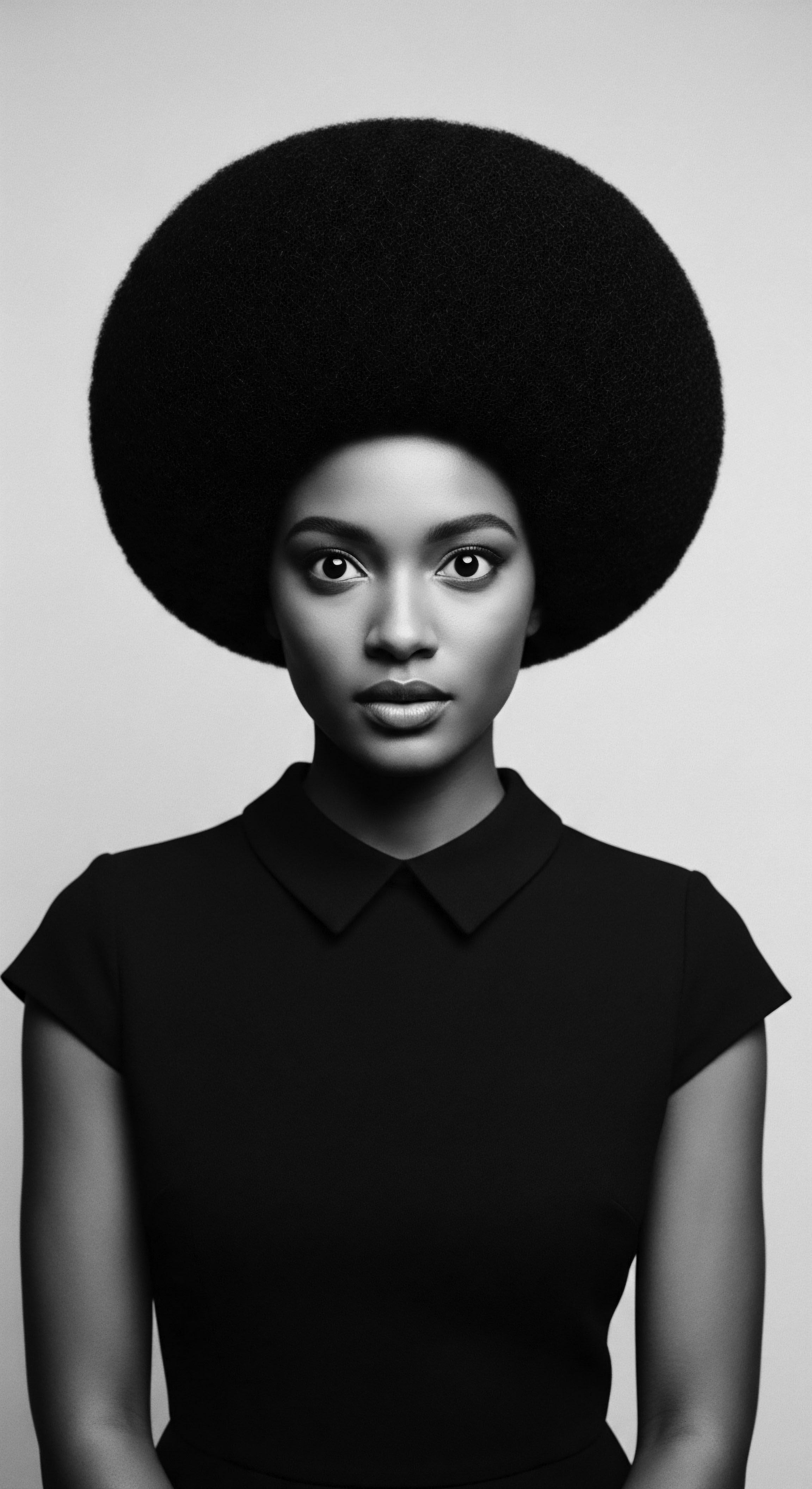
Academic
The Natural Hair Regimen, from an academic perspective, represents a complex interplay of trichology, cultural anthropology, historical sociology, and psychodermatology. Its Definition extends beyond mere prescriptive steps, encompassing a nuanced understanding of its physiological underpinnings, its historical genesis as a response to systemic beauty oppression, and its contemporary Significance as a powerful declaration of identity and autonomy within the textured hair community. This approach mandates a rigorous examination of the regimen as a dynamic system, one that adapts to environmental pressures, scientific advancements, and evolving cultural landscapes, yet remains anchored in the immutable legacy of textured hair heritage.
The Meaning of the Natural Hair Regimen is fundamentally rooted in the biological specificities of highly coiled or kinky hair, characterized by its elliptical cross-section, numerous points of torsion along the hair shaft, and fewer cuticle layers (Tharps & Byrd, 2001). These structural attributes contribute to its distinct properties, including a higher susceptibility to dryness due to impaired sebum distribution, increased fragility at the bends of the hair strand, and a greater tendency for tangling and knotting. An academic interpretation of the regimen therefore necessitates an understanding of these biomechanical vulnerabilities, recognizing that its practices—such as deep conditioning, protective styling, and moisture sealing—are not arbitrary, but rather direct, empirically derived responses to these inherent characteristics. The regimen thus emerges as an optimized system of care, meticulously crafted to mitigate the inherent challenges of textured hair while maximizing its vitality and structural integrity.
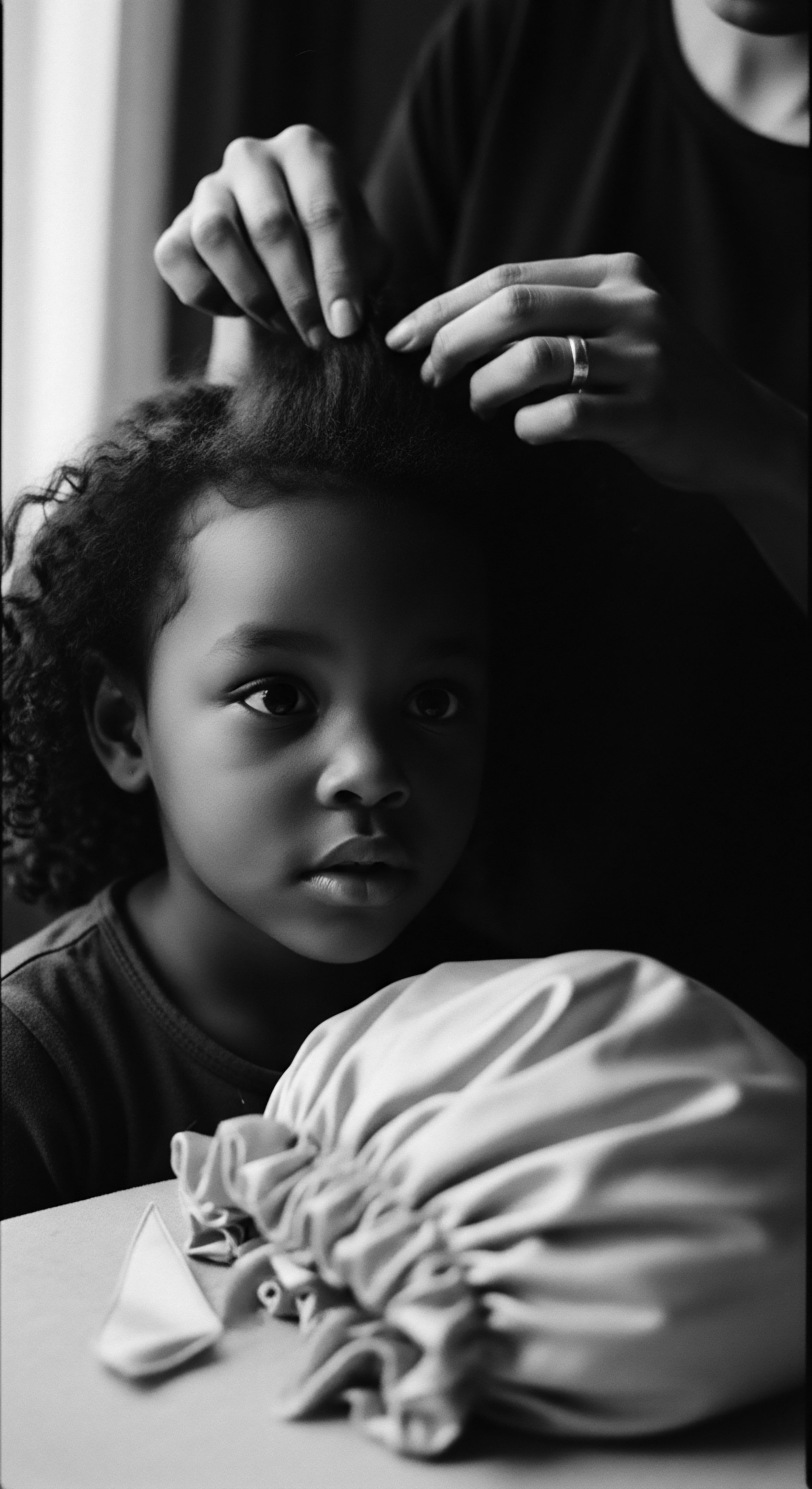
The Unbound Helix ❉ Identity and Societal Implications
The Natural Hair Regimen is not merely a set of care practices; it is a profound sociopolitical statement, a deliberate reclamation of selfhood and heritage that gained widespread momentum during the mid-20th century Civil Rights Movement. The “Black is Beautiful” movement, in particular, served as a crucible for this transformation, as individuals of African descent consciously rejected Eurocentric beauty standards that had long imposed a singular, often unattainable, ideal of straight hair and lighter skin. The adoption of natural styles, most notably the Afro, became a visible symbol of empowerment, political resistance, and an assertion of pride in African heritage. This period marked a critical juncture where the personal act of hair care became intrinsically linked to collective identity and social justice.
Beyond its physical benefits, the Natural Hair Regimen serves as a potent emblem of self-acceptance and cultural reclamation.
This historical context illuminates the regimen’s deeper Connotation. It is a conscious choice to wear one’s hair in its native form, an act that counters centuries of pressure to conform through chemical straightening and other alterations. The decision to embrace a natural hair regimen, therefore, carries the weight of historical struggle and the triumph of self-acceptance.
It is a form of embodied resistance, challenging prevailing norms and affirming the inherent beauty and dignity of textured hair. This resistance extends to contemporary spaces, where debates around hair discrimination persist, making the regimen a continuous act of defiance and a celebration of ancestral legacy.
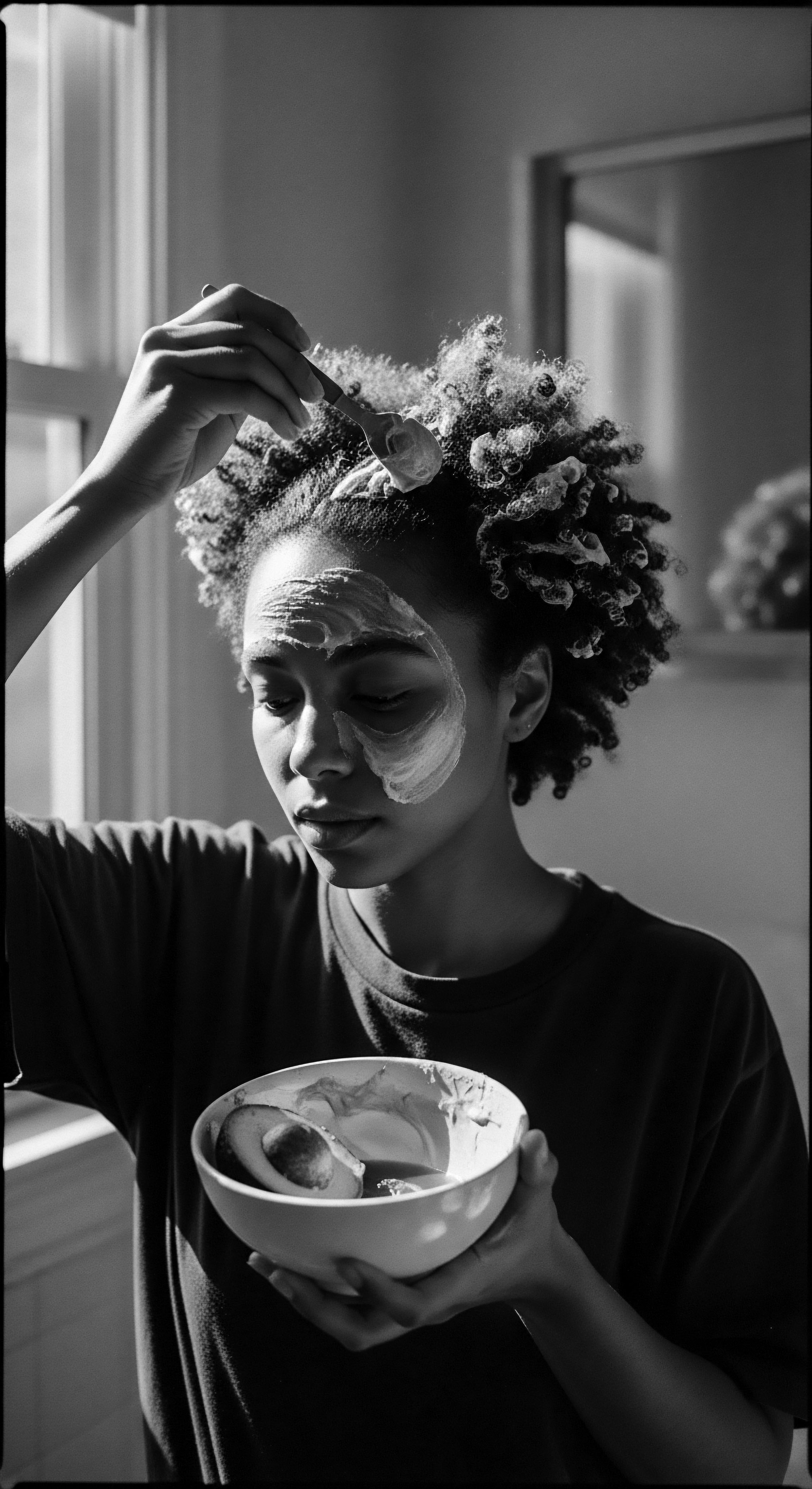
Psychosocial Dimensions and Cultural Resonance
The psychosocial dimensions of the Natural Hair Regimen are substantial, impacting self-perception, community belonging, and cultural continuity. For many, the journey into natural hair care is a process of self-discovery, leading to enhanced self-esteem and a deeper connection to their ancestral roots. This connection is not abstract; it is often felt through the tactile experience of caring for hair that mirrors that of their forebears, utilizing techniques and even ingredients that have been passed down through generations. The regimen fosters a sense of authenticity, allowing individuals to present themselves to the world in a manner that aligns with their internal sense of heritage and identity.
Moreover, the Natural Hair Regimen cultivates a vibrant community. Online platforms, social gatherings, and hair care events serve as spaces for sharing knowledge, offering support, and celebrating collective journeys. This communal aspect reinforces the regimen’s Import, transforming what might seem like individual grooming practices into shared cultural experiences.
The exchange of tips, product recommendations, and styling techniques becomes a modern iteration of the communal hair grooming rituals that characterized many traditional African societies. This shared experience creates a powerful sense of solidarity, transcending geographical boundaries and uniting individuals through a common heritage of hair.
The academic scrutiny of the Natural Hair Regimen also delves into its economic implications, particularly the rise of a specialized market for natural hair products and services. This economic ecosystem, driven by the needs of textured hair, has created opportunities for entrepreneurship within Black and mixed-race communities, further solidifying the regimen’s societal footprint. This economic dimension also presents opportunities for ethnobotanical research, validating traditional plant uses and potentially leading to sustainable, community-benefiting industries (Okoli et al. 2024; Sharaibi et al.
2024). The intersection of traditional knowledge, scientific validation, and economic empowerment illustrates the comprehensive reach of the Natural Hair Regimen as a subject of academic inquiry.
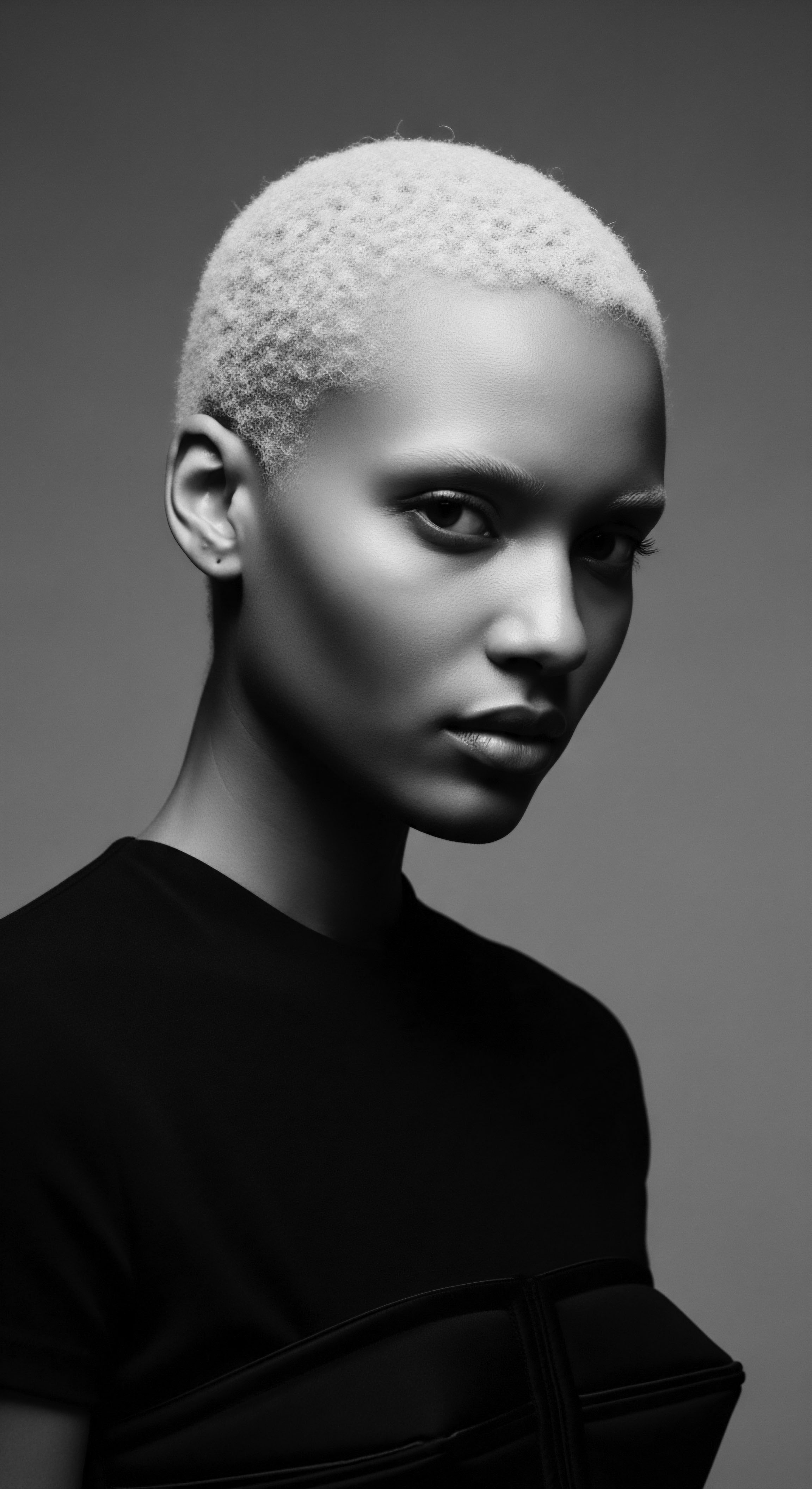
Reflection on the Heritage of Natural Hair Regimen
The Natural Hair Regimen, as chronicled within Roothea’s living library, stands as a testament to the enduring spirit of textured hair. It is a quiet revolution, unfolding strand by strand, yet echoing with the powerful whispers of generations past. From the elemental biology that shapes each unique curl to the ancestral hands that once braided stories into hair, this regimen is a continuous narrative of resilience, wisdom, and profound self-acceptance. It speaks of a time when hair was a language, a map, a spiritual conduit, and a marker of identity, practices that, though challenged by historical adversities, never truly faded.
In every carefully chosen ingredient, in each gentle detangling, and in every protective style, we hear the ‘Soul of a Strand’ speaking—a soulful resonance with those who came before us, who nurtured their crowns with ingenuity and care, even when resources were scarce. The regimen is not merely about achieving a certain look; it is about recognizing the deep historical roots that ground textured hair, acknowledging its journey from being a symbol of oppression to a beacon of pride and liberation. It is a practice that invites us to listen to the innate wisdom of our hair, to understand its needs, and to celebrate its inherited beauty, thereby weaving our present into the rich, unbroken lineage of our collective hair heritage.
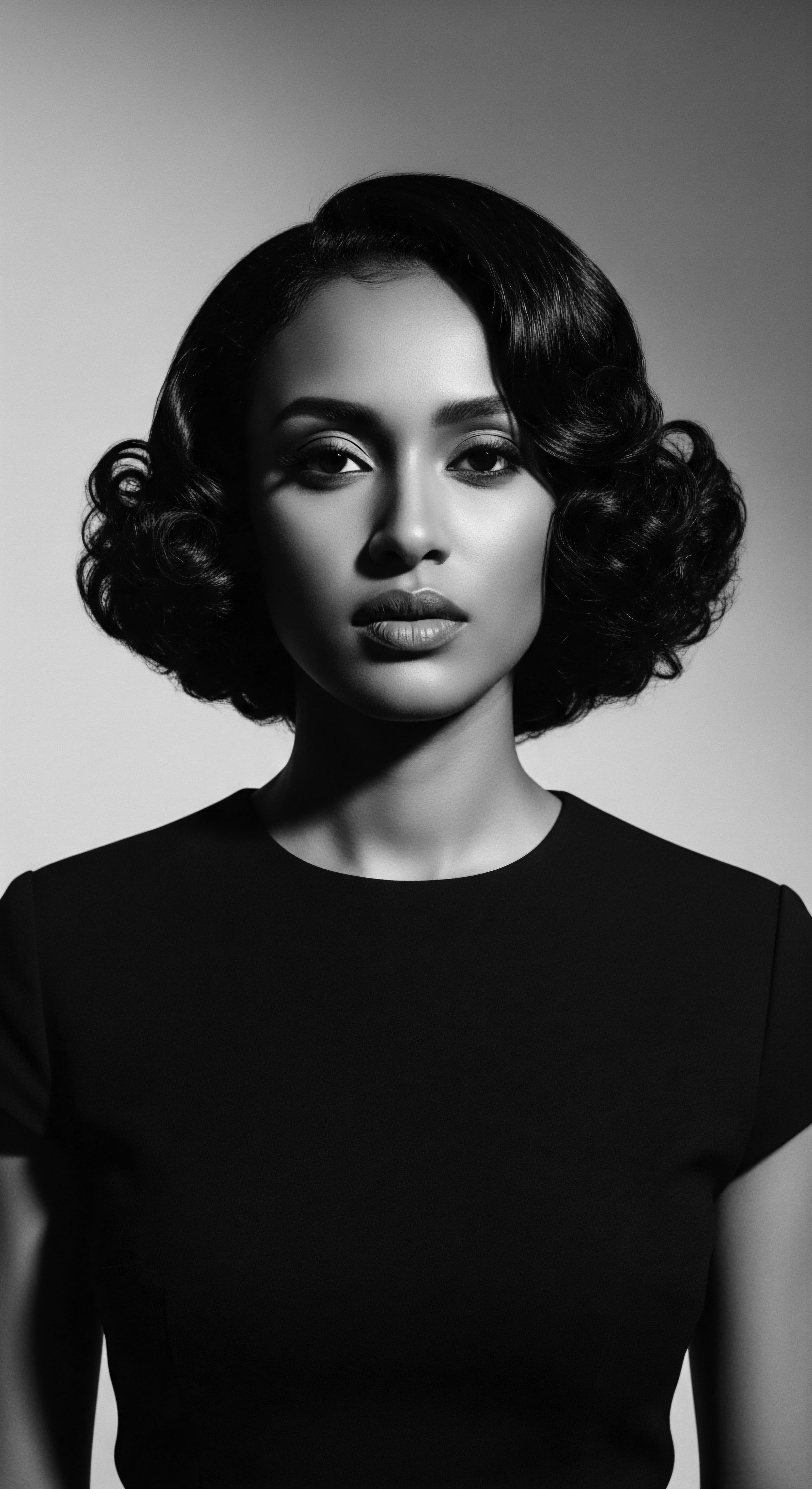
References
- Childish Mane LLC. (2023). ROAD TO FREEDOM ❉ How Enslaved Africans in America Used Hair Styles to Map Escape Routes.
- Okoli, B. J. Ezeh, C. E. & Okoli, C. A. (2024). Cosmetopoeia of African Plants in Hair Treatment and Care ❉ Topical Nutrition and the Antidiabetic Connection?. Diversity, 16(2), 96.
- Sharaibi, O. J. Oluwa, O. K. Omolokun, K. T. Ogbe, A. A. & Adebayo, O. A. (2024). Cosmetic Ethnobotany Used by Tribal Women in Epe Communities of Lagos State, Nigeria. J Complement Med Alt Healthcare, 12(4), 555845.
- Tharps, L. & Byrd, A. (2001). Hair Story ❉ Untangling the Roots of Black Hair in America. St. Martin’s Press.
